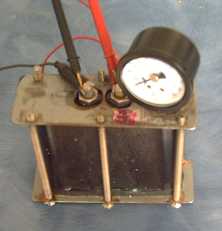Reflecting
February Details
I did do a little shopping to source out an axle and bearings idea.
I went into a store and looked at some packages of trailer wheel bearings. Just to play with ideas, I bought a package of 1" bearings with two bearings and the outer races for them (along with a cotter pin,
Mechanical Torque
Converter Project:
Torque Leverage Without Gears
February Details
Torque Leverage Without Gears
February Details
January Details
February Experiments
In the last week of January I had put together a "ClO4-Mn" battery and started charging it at low current as the first stage of the "burn-in". Following this, like most of my batteries, it didn't seem to hold a charge. It seemed I'd put in the right sorts of chemical, in reasonable proportions. The lead acid batteries had all the right chemicals, but they needed deep cycling to "renew" them. Seems there are forms of chemical 'trickery', and there are proceedures for burning in some types of batteries. Perhaps there were similar things I had to do to my own batteries to get them to work?
First I upped the current to around 30mA. Soon the cell had over 5 volts across it. Seemed ridiculous. Then I shorted the cell for a while. Then I charged again and it didn't semm to do much differently. Then I reversed the polarity. I expected the voltage to start at some value and work its way up. Instead it quickly reached (-) 3-1/2 volts and worked its way down, at first quickly and then gradually (seconds, minutes) to 1.9 volts. That's about the voltage it should have risen to and stopped at when connected the other way around!
I look

"Burning in"
January Details